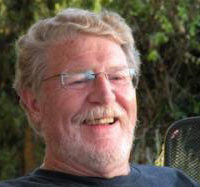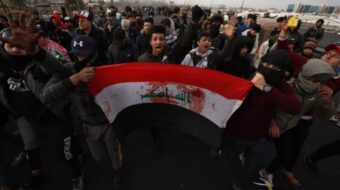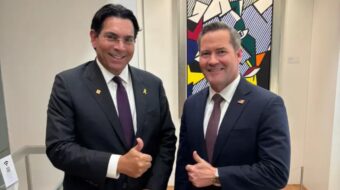How involved is the U.S. military in Yemen, and is the Obama administration laying the groundwork for a new foreign adventure? According to several news agencies, including Agence France Presse, UPI and the Washington Post, very involved and likely to be more so in the future,
“U.S. military teams and intelligence agencies are deeply involved in secret joint operations with Yemeni troops,” says Dana Priest, the Post’s ace intelligence and military affairs reporter, including “the U.S. military’s clandestine Joint Special Operations Command, whose main mission is tracking and killing suspected terrorists.”
The quarry of these assassination teams are supposed leaders of al-Qaeda in the Arabian Peninsula (AQAP), but the deepening U.S. alliance with the authoritarian government of Yemen may soon entangle it in two complex civil wars-a rising by disenfranchised Shiites in the north, and an increasingly powerful succession movement in the country’s south.
Expanding the “footprint”
According to UPI, the White House is quietly expanding “the footprint” of “elite forces inside Yemen.” One military official told the news agency, “The numbers are definitely going to grow.” The Obama administration increased “security” funds for Yemen from $67 million to $150 million.
Navy Seals, Delta Force troops, and intelligence units are working closely with the government of President Ali Abdullah Saleh, providing weapons, training and intelligence. And sometimes more.
On Dec. 17, 2009, a U.S. BGM-109D Tomahawk cruise missile attacked the village of al-Maajala in south Yemen, killing 55 people, the bulk of them women and children. The Tomahawk-launched from a U.S. surface ship or submarine- was armed with a cluster warhead that spread a storm of razor sharp steel and incendiary material over 500 square feet.
Amnesty International’s Mike Lewis said his organization was “gravely concerned by evidence that cluster munitions appear to have been used in Yemen,” because “cluster munitions have indiscriminate effects and unexploded bomblets threaten lives and livelihoods for years afterwards.”
Long-standing internal conflict
The target was a supposed al-Qaeda training camp, but the Saleh government draws no distinction between AQAP and the Southern Movement (SM), a group advocating an independent south Yemen. The SM has a long list of grievances reflecting problems going back to 1990 when North Yemen and the southern Democratic People’s Republic of Yemen were unified.
That merger between the conservative north and the better educated and socialist south was never a comfortable one and led to a particularly nasty civil war in 1994. The north won that war by using jihadists freshly returned from fighting the Russians in Afghanistan. Since the end of that four-month war, the SM charges that the north siphons off the south’s oil without adequate compensation, discriminates against southerners on access to jobs, and has cornered the country’s vanishing water supplies. Southern protests are met with tear gas and guns, and, according to SM leaders, some1500 “secessionists” have been imprisoned and more than a hundred killed.
According to UPI, “The [Saleh] regime’s heavy-handed response to the southerners has only fueled the demand for independence and encouraged the disparate southern groups to come together.”
Saleh claims the SM is closely tied to AQAP, which immediately gets Washington’s attention, and has allowed his government to tap into the resources of the American “war on terrorism.” Southern independence leaders, like Tariq al-Fadhli, deny any ties to AQAP and say the Southern Movement is non-violent. Whether it will remain so under the Saleh government’s continued assaults is an open question. The December cruise missile strike is not likely to encourage pacifism.
The fighting in the north between the Saleh government based in the capital, Sanaa, and the Shiite Houthi, who inhabit the north’s forbidding terrain, is long-standing. While Saleh and his supporters in Saudi Arabia say Iran is stirring up the trouble, there is no evidence for ties between Iran and the Houthi. The tensions between the Saleh government and the Houthi are local and generally have to do with access to political power. But by bringing Iran into the picture, Saleh can claim he is fighting terrorism, thus making his regime eligible for arms, intelligence, and training.
Ratcheting up special operations
The U.S. is ratcheting up the use of Special Operations Forces (SOF) worldwide. The administration has increased the number of countries in which SOFs are deployed from 60 to 75, and upped the SOF budget 5.7% to $6.3 billion for 2011. The White House also added an additional $3.5 billion for SOFs to its 2010 budget.
One military official told the Washington Post that the Obama administration had given the military “more access” than former President George W. Bush. “They [the Obama administration] are talking publically much less but that are acting more. They are willing to get aggressive much more quickly.”
In a recent talk that sounded very much like the Bush administration’s doctrine of pre-emptive war, the White House’s counterterrorism expert John Q. Brennan said that U.S. strategy was not to just “respond after the fact to terrorism,” but to “take the fight to al-Qaeda and its extremist affiliates, whether they plot and train in Afghanistan, Pakistan, Yemen, Somalia, and beyond.”
Poverty and communal conflicts
If the U.S. does increase its military footprint in Yemen, it will be expending hundreds of millions of dollars in the poorest country in the region, a country where 40 percent of its 22 million residents are jobless and where water is becoming a scare commodity. The U.S. shares much of the blame for the current economic crisis in Yemen. When Yemen refused to support the 1991 Gulf War against Saddam Hussein, Saudi Arabia expelled 850,000 Yemeni workers, and the U.S. cut $70 million in foreign aid. The effect of both actions was catastrophic, and Yemen never recovered from the one-two blow.
U.S. support for the Saleh regime will inevitably draw it into the conflicts in the north and the south, with disastrous results for all parties.
“In Yemen the U.S. will be intervening on one side in a country which is always in danger of sliding into a civil war,” says the Independent’s Middle East reporter Patrick Cockburn. “This has happened before. In Iraq the U.S. was the supporter of the Shia Arabs and Kurds against the Sunni Arabs. In Afghanistan it is the ally of the Tajiks, Uzbeks and Hazara against the Pushtun community. Whatever the intentions of Washington, its participation in these civil conflicts destabilizes the country because one side becomes labeled as the quisling supporter of a foreign invader. Communal and nationalist antipathies combine to create a lethal blend.”
This article originally appeared in Conn Hallinan’s blog, “Dispatches from the Edge,” on Aug. 3.










